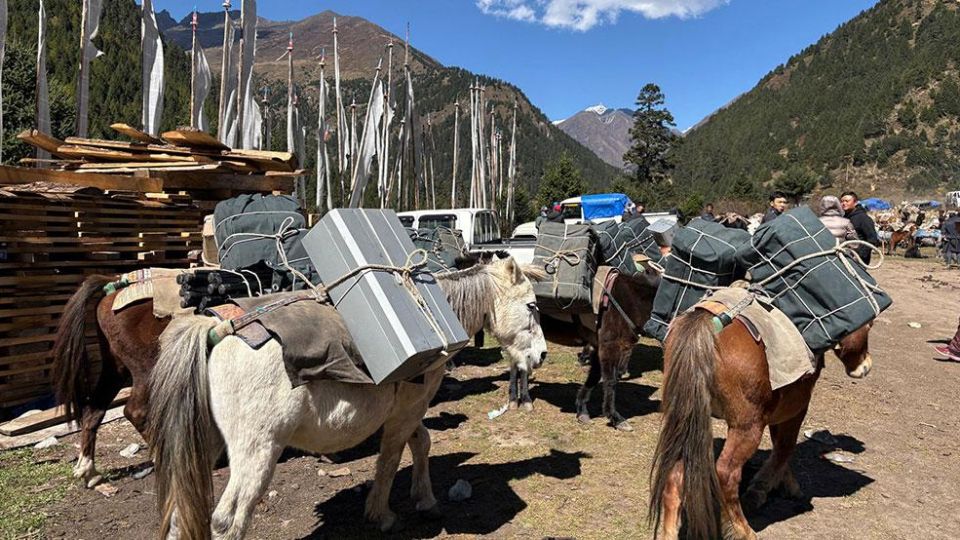October 24, 2025
THIMPHU – Tenzin, a resident of Laya, is originally from Phongmey in Trashigang. Ten years ago, he married a Layap woman and settled in the highland village.
Today, besides earning from collecting cordyceps and incense products, horses have become one of the main sources of income for his family of five.
Laya currently has about 1,500 horses and mules. Every household owns at least four, while some families have as many as 18. Most Layaps prefer mules because they are stronger, more resilient, and better adapted to the harsh mountain terrain.
Tenzin owns eight horses. Like many others, he uses them to carry loads for visitors from Taktsemakhang, the final road point, about a two-and-a-half-hour walk from Laya. The Layaps have set a fixed rate of Nu 450 per transporting goods from Taktsemakhang to Laya, and Nu 300 for the return trip.
“During the peak tourist season or the Royal Highland Festival, I use my eight horses three times a day to carry loads from Taktsemakhang. I earn around Nu 11,000 a day,” Tenzin said, adding that this income helps his family buy essential food items.
Some Layaps also offer transport services to residents of Lunana, a five-day walk from Laya. They charge Nu 800 per mule per day for the journey, mostly before winter, when Lunaps transport food supplies for the long, snowbound months.
According to Tenzin, a few tourists also choose to travel on horseback from Laya to Lunana and onwards to Bumthang.
“We spend around 25 days with tourists, and with my eight horses, I earn around Nu 160,000,” he said.
However, owning a mule in Laya has become costly due to rising demand. A mule now costs at least Nu 120,000, while a horse sells for around Nu 90,000.
For Kinley Zam, 53, who owns ten horses, managing them has become more challenging. She limits their work so they have enough time to rest and recover.
“I only earn around Nu 20,000 a month from my horses,” she said. “When I feel that there isn’t much work for the horses, I set them free for about four months.”
The growing cost of feed has made rearing horses harder. During winter, when grass is scarce, Layaps rely on maize and Karma feed, which cost Nu 1,800 for a 50-kg sack transported from Khuruthang, Punakha.
For younger Layaps like 23-year-old Kinley Yangzom, horses remain indispensable.
“When we go to collect cordyceps from the high mountains, our mules carry all our belongings. Without them, we cannot sustain ourselves here in Laya,” she said.
Mules and horses also serve the local Basic Health Unit, gewog office, and school by transporting supplies and equipment.
Still, a debate lingers in Laya: what would happen to this vital source of income once a road reaches the village? While residents acknowledge that a road would make life easier, especially in times of illness, they fear it would also put an end to their mule transport services, which many depend on for their livelihoods.
For now, most Layaps would rather prefer the road stop at Taktsemakhang, where their horses still stand between them and the outside world, between subsistence and survival.


